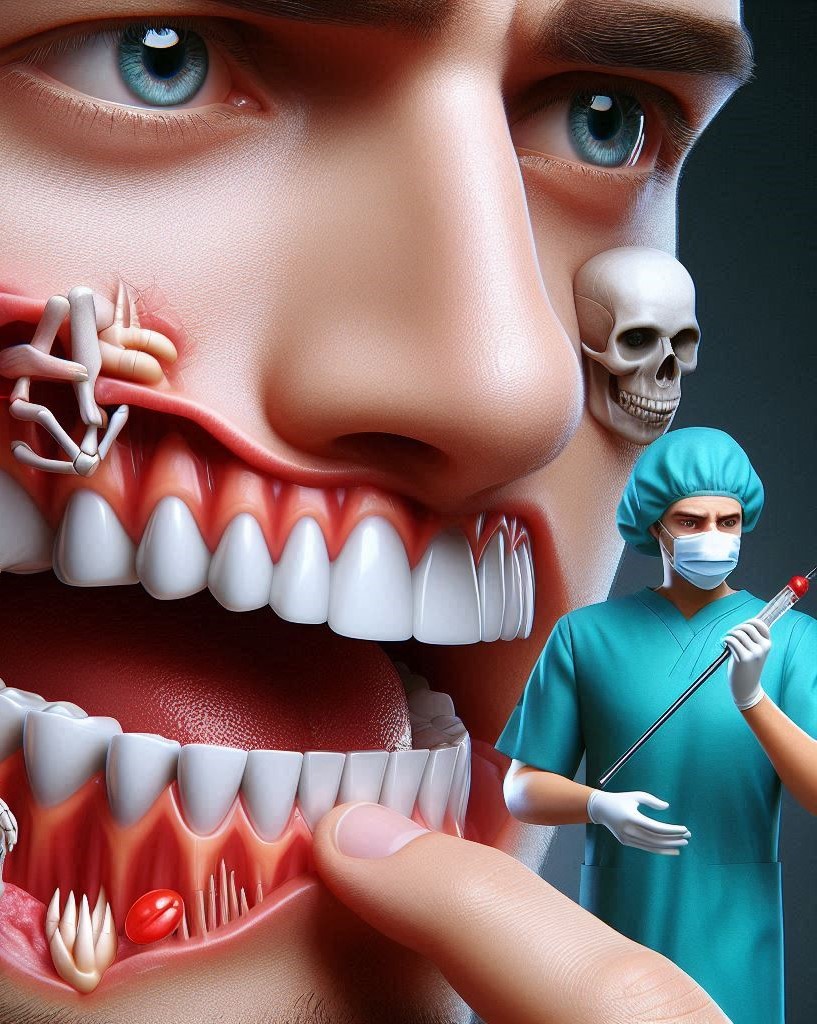Dental fillings are a fundamental aspect of modern dentistry, designed to restore the structure and function of teeth affected by cavities, trauma, or decay. While dental fillings have long been a part of routine dental care, many patients find themselves wondering about the post-treatment care and whether they can go back to their normal eating and drinking habits right after getting a filling. While most fillings are safe and long-lasting, the recovery process and the dos and don’ts following the procedure vary based on factors such as the type of filling, the size and location of the cavity, and individual oral health.
This guide offers a detailed breakdown of everything you need to know about eating and drinking after getting a dental filling, with extra focus on the different types of fillings, how to care for your fillings, managing sensitivity, and common issues that could arise. Whether you are a first-timer with dental fillings or just looking to understand the procedure better, this guide aims to answer all your questions.
The Role of Dental Fillings: A Quick Overview
Before we get into the specifics of eating and drinking after a filling, let’s take a moment to understand what dental fillings are and why they are necessary.
What is a Dental Filling?
A dental filling is a material used to fill a cavity, which is a hole or space created when a tooth decays. Fillings are designed to restore the function of the tooth and prevent further decay by sealing the cavity. Fillings can be made of various materials, including metals, ceramics, and resins, and the choice of material depends on the location and size of the cavity, as well as patient preferences.
Types of Dental Fillings
The type of filling used for your cavity will impact the recovery process, including how soon you can resume eating and drinking. Let’s explore the most common types of dental fillings in great detail:
Amalgam Fillings (Silver Fillings)
Amalgam fillings have been used for over a century and remain one of the most durable materials for filling cavities. They are made from a mixture of metals, including silver, mercury, tin, and copper.
Advantages of Amalgam Fillings:
- Durability: Amalgam is strong and can withstand heavy chewing pressure, making it ideal for molars.
- Cost-effective: Generally less expensive than composite fillings, making them a popular choice for patients looking for an affordable option.
- Longevity: Amalgam fillings last longer than most other filling materials, often enduring 10-15 years or more with proper care.
Disadvantages:
- Aesthetic concerns: Amalgam is silver-colored, which means it’s visible when you smile or speak, which may not be appealing for patients who need fillings in visible areas.
- Expansion and contraction: Amalgam can expand and contract with temperature changes, potentially leading to fractures in the tooth over time.
Composite Fillings (Tooth-Colored Fillings)
Composite fillings are made from a mixture of resins and silica particles, which are designed to match the natural color of the tooth. These are ideal for filling cavities in visible teeth.
Advantages of Composite Fillings:
- Aesthetics: Composite fillings blend seamlessly with the natural tooth color, making them ideal for front teeth or areas that are visible when you smile.
- Bonding ability: The material bonds directly to the tooth, providing extra strength and support.
- Less tooth structure removal: The dentist can preserve more of the natural tooth with composite fillings since the material bonds directly to the tooth, requiring less drilling.
Disadvantages:
- Wear and tear: While composite fillings are durable, they are not as resistant to wear as amalgam fillings, especially in areas that undergo heavy chewing pressure.
- Sensitivity: Some patients may experience heightened sensitivity to hot or cold foods in the days following the procedure.
- Cost: Composite fillings tend to be more expensive than amalgam fillings, partly due to the skill required to place them and the materials involved.
Ceramic Fillings (Porcelain Fillings)
Ceramic fillings, also known as porcelain fillings, are made from a durable ceramic material that mimics the look and feel of natural teeth.
Advantages of Ceramic Fillings:
- Natural appearance: Porcelain fillings look incredibly natural, making them a preferred choice for patients who want a perfect match to their natural tooth color.
- Durability: Ceramic fillings are more resistant to staining and wear compared to composite fillings.
- Long-lasting: These fillings can last many years with proper care.
Disadvantages:
- Cost: Ceramic fillings are often more expensive than other types of fillings due to the materials and technology used.
- Brittleness: Although strong, porcelain is more likely to break under extreme pressure or trauma than metal fillings.
Resin Ionomer Fillings
Resin ionomer fillings are a combination of acrylic resins and glass materials. They are commonly used for cavities in areas that aren’t subject to heavy chewing pressure, such as cavities below the gum line or on the root surface of teeth.
Advantages of Resin Ionomer Fillings:
- Fluoride release: One of the significant benefits of resin ionomer fillings is that they release fluoride, which can help prevent further decay.
- Bonding: Resin ionomers bond well with tooth structure and are often used as a base or lining material under other types of fillings.
Disadvantages:
- Durability: Resin ionomer fillings are not as durable as other types of fillings, especially when used in areas subjected to heavy chewing pressure.
- Aesthetic concerns: While they are translucent, they may not blend as seamlessly as composite fillings.
Glass Ionomer Fillings
Similar to resin ionomers, glass ionomer fillings release fluoride, which helps prevent decay. They are often used in cavities that are not exposed to heavy chewing forces.
Advantages of Glass Ionomer Fillings:
- Fluoride release: These fillings help protect the tooth from future decay by releasing fluoride.
- Good bonding: Glass ionomer fillings bond well to teeth and can be used in areas where moisture control is difficult.
Disadvantages:
- Lower durability: Glass ionomer fillings are not as durable as composite or ceramic fillings and may wear out faster.
- Less aesthetic appeal: They are more translucent and not as visually appealing as other materials like composite or porcelain.
Post-Procedure Guidelines: Eating and Drinking After a Filling
Immediately After the Filling Procedure:
When you leave the dentist’s office after getting a filling, the first thing to note is that you may still be numb due to the local anesthesia. This numbness typically lasts for 1 to 3 hours, depending on the type of anesthesia used and the individual’s response to it. During this period, it’s crucial not to attempt eating or drinking.
Reasons to Avoid Eating or Drinking Immediately After the Procedure:
- Risk of Biting Yourself: While numb, you may accidentally bite your lips, cheek, or tongue, which can cause injury.
- Risk of Choking: Since your throat may also be numb, swallowing food or liquid can become difficult and dangerous.
- Potential for Dislodging the Filling: If the filling hasn’t set or hardened yet, chewing or drinking too soon can risk damaging the filling or interfering with the setting process.
Post-Filling Care for the First 24-48 Hours
Once the anesthesia has worn off, you can resume eating and drinking, but there are several guidelines to follow to ensure your filling remains intact and your recovery goes smoothly.
- Eat Soft Foods: For the first 24-48 hours, stick to soft foods to prevent excess pressure on the filling. Some ideal choices include mashed potatoes, soup (cooled to room temperature), yogurt, scrambled eggs, smoothies, and well-cooked pasta.
- Avoid Hot and Cold Foods: In the first few days, the filled tooth may be sensitive to temperature changes. Foods or drinks that are too hot or cold could trigger discomfort or pain.
- Chew on the Opposite Side: If you have had a filling placed on one of your molars or premolars, avoid chewing with that side for the first few days to prevent pressure on the newly filled tooth.
- Avoid Sticky or Hard Foods: Sticky foods, like caramel or chewing gum, and hard foods, such as nuts or hard candy, should be avoided as they could potentially dislodge or damage the filling.
- Wait for Fillings to Set: Some fillings, especially composite and resin-based materials, require time to set and harden after being placed. For composite fillings, your dentist may use a special light to harden the material immediately. However, it’s best to avoid chewing on that tooth until the filling is completely set. In most cases, this takes a few hours, but follow your dentist’s specific instructions.
Drinking After Getting a Filling
Just as with eating, drinking after a filling requires some precautions. Here’s a more detailed breakdown:
- Avoid Drinking Through a Straw: For the first 24 hours after getting a filling, avoid drinking through a straw. Sucking on a straw can create negative pressure in your mouth, which may affect the newly placed filling or even cause it to loosen.
- Drink Lukewarm Beverages: Avoid hot drinks like coffee or tea during the first day. Instead, stick to lukewarm or room-temperature beverages. Extreme temperatures can trigger sensitivity in the filled tooth.
- Hydrate, But Avoid Alcohol: While it’s important to stay hydrated after any dental procedure, it’s crucial to avoid drinking alcohol for at least 24 hours. Alcohol can irritate sensitive gum tissues, interfere with the numbing agents still in your system, and slow down the healing process.
- No Carbonated Drinks for 24 Hours: Carbonated beverages can sometimes irritate the dental filling or the surrounding gum tissues. It’s also advisable to stay away from acidic drinks like citrus juices, as they can increase sensitivity.
Common Complications and Concerns After a Filling
While the majority of patients experience minimal issues after getting a filling, it’s important to be aware of potential complications. These include:
Tooth Sensitivity:
After the procedure, it’s common to experience tooth sensitivity. This can manifest as discomfort when consuming hot, cold, or sweet foods or drinks. Sensitivity is particularly common with composite fillings or when the cavity was deep and close to the tooth’s nerve. The discomfort typically subsides within a few days to weeks, but if the sensitivity persists or worsens, consult your dentist.
Pain or Discomfort from the Filling:
Sometimes, a filling can cause discomfort if it was placed too high, meaning it disrupts your bite. If you experience discomfort or pain when biting down, contact your dentist, as they may need to adjust the filling.
Filling Falling Out or Becoming Loose:
If a filling becomes loose or falls out, it’s important to see your dentist immediately to avoid further damage to the tooth. Fillings can sometimes fail due to wear, trauma, or poor bonding to the tooth.
Allergic Reactions:
While rare, some individuals may experience allergic reactions to materials used in the filling, particularly with amalgam fillings. Symptoms may include swelling, itching, or discomfort. If you suspect an allergic reaction, consult your dentist as soon as possible.
Conclusion
In summary, while you can return to eating and drinking after getting a filling, it’s important to do so gradually and with care, especially within the first 24-48 hours. Be mindful of the type of filling you have, your comfort levels, and the recommendations your dentist provides for aftercare. By following the right guidelines, you can ensure that your dental filling remains intact, and your recovery is swift and uncomplicated.
Remember that regular dental check-ups and good oral hygiene practices will also help keep your fillings in optimal condition, ensuring they last as long as possible. If any issues arise after your procedure, don’t hesitate to reach out to your dentist for advice and treatment.
SOURCES
Bartlett, D. W. & Sherriff, M. (2003). The role of the dental practitioner in the management of dental decay. Dental Update, 30(2), 82-90.
Brennan, M. T. & Elter, J. R. (2007). Composite resin fillings: Materials and techniques for clinical success. Journal of Clinical Dentistry, 18(1), 24-32.
González-López, S. & Ramos-Vázquez, M. (2014). Comparative study of the wear resistance of various dental filling materials. Journal of Prosthetic Dentistry, 112(5), 1024-1031.
Harris, R. & Boyd, D. L. (2015). An update on dental fillings and restorations. Oral Health Research Journal, 26(3), 129-136.
Jones, D. L. & Martin, A. (2011). The impact of dental material selection on longevity and clinical performance of restorations. Dental Materials Science Review, 7(2), 33-40.
Kaiser, E. M. & Cohen, E. S. (2010). Advances in resin-based composite materials for dental restorations: A review of current technologies. Journal of Esthetic and Restorative Dentistry, 22(4), 234-245.
Lazarski, M. D. & Wright, C. M. (2012). Restorative materials and their role in preserving dental health. Journal of the American Dental Association, 143(8), 898-907.
Liu, J. & Zhu, X. (2017). The influence of temperature changes on the longevity of composite dental restorations. Journal of Dental Research, 96(11), 1238-1245.
Reyes, M. & Anderson, B. P. (2019). Postoperative care and recovery after dental fillings: A clinical guide. Journal of Dental Practice and Research, 10(4), 56-64.
Smith, R. A. & Buchanan, M. (2013). The effectiveness of fluoride-releasing dental materials: A comprehensive review. International Journal of Dentistry, 2013, Article ID 284525, 1-9.
Thompson, K. H. & McKay, J. (2018). Sensitivity following dental fillings: Causes and treatments. Dental Pain Management Journal, 15(3), 121-130.
Williams, R. P. & Gale, M. (2004). A comprehensive guide to restorative dental materials. Dental Journal of Clinical Practice, 19(2), 211-218.
Zhao, Y. & Wu, W. (2016). The impact of filling materials on the postoperative experience: A comparative study. Journal of Clinical Oral Health, 30(2), 180-189.
HISTORY
Current Version
March 1, 2025
Written By:
SUMMIYAH MAHMOOD




